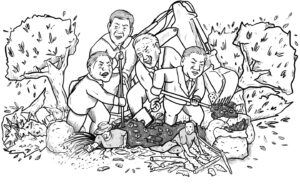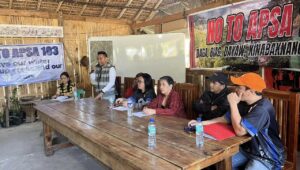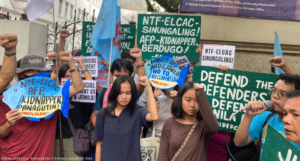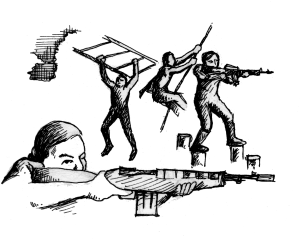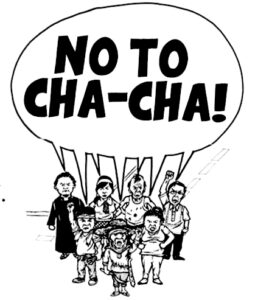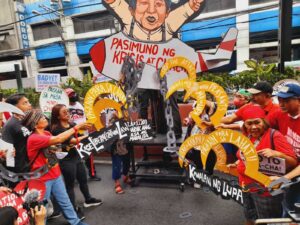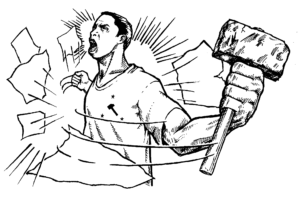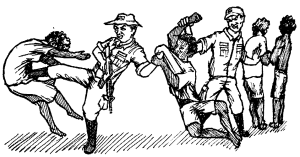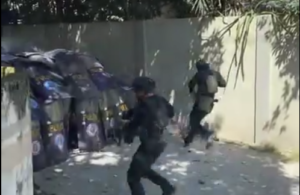Death in mining

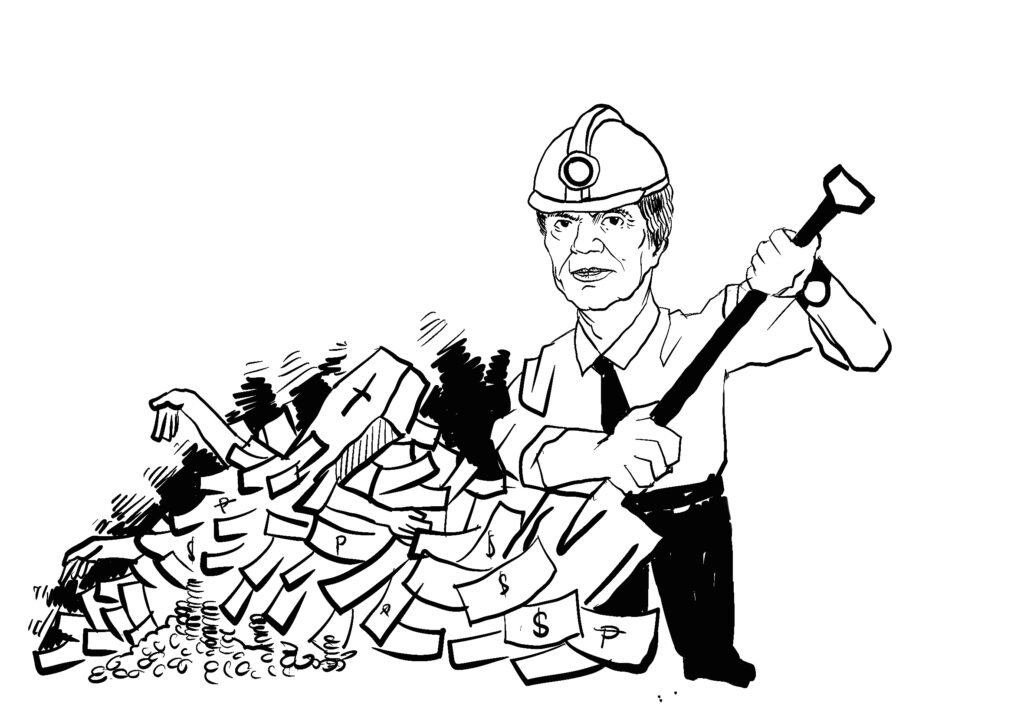
The February 6 landslide disaster in Maco, Davao de Oro (formerly Compostela Valley) is just the latest of a number of tragedies suffered in the province that is one of the Philippines’ mining centers, and not the first involving the company Apex Mining Corporation. The people of Davao region, and the Mindanao Lumad people as a whole, have long stood up against large-scale mining.
Amid tragedy at its doorstep, shedding crocodile tears and feigning sympathy, Apex did not for one minute stop its operations and compelled remaining mine workers to continue working.
History of destruction and plunder
Apex began mining the Mansaka tribe ancestral land in Maco in 1976. As elsewhere, it not only destroyed the ecology of the forest and land, it also destroyed Mansaka traditional livelihood and culture. Over the years, it drove the Mansakas out of their communities, and enslaved them as mine workers or its support system.
It has long been notorious for low wages and unsafe working conditions. Its operations were suspended in 2000 after workers protested. It resumed large-scale mining under the supervision of foreign companies Goldridge Mining Corporation (a US company), Viclode Mining Corporation, and Mintricor Inc. in 2003, Crew Gold (then a Canadian company) bought it in 2009, which in turn sold to ASVI (Malaysia) in 2009. Enrique Razon Jr’s Monte Oro and his comprador partners bought it in 2013.
Apex currently mines areas under two MPSAs—MPSA-225-2005-XI covers 679.02 hectares in the neighboring villages of Masara and Teresa, and MPSA-234-2007-XI which covers 1,558.53 hectares in the adjacent barangays of Masara, Mainit, Tagbaros, New Leyte, Elizalde and New Barili in Maco and some parts of the adjacent town of Mabini. In 2023, the company further expanded its operations when it purchased Asia Alliance Mining Resources Corp. holding a permit to mine 20,000 hectares in Maco, Mabini and Maragusan, all in Davao de Oro.
The two MPSAs are valid for 25 years and can be extended for an additional 25 years or until 2030 and 2032. An estimated 1,250,000 ounces of gold will be extracted within the scope of the two MPSAs alone. In 2022, the company earned a net income of ₱3.339 billion, which is 316.1% higher than in 2021. In 2023, it recorded a net income of ₱2.3 billion in the first nine months alone.
For plundering natural resources, the reactionary state charged the company only 4% excise tax. The company even consistently delays paying its meager 1% obligation to local governments and tribes. After almost four decades, the only contribution Apex can flaunt to the community is a school and a health center. The housing for its own workers was even built in partnership with a non-government organization. Most infuriatingly, the Mansaka tribe remains one of the poorest in the country and enslaved on their own land.
According to the company’s own study, its mining area frequently experiences downpours, especially between November and February. The soil is loose and the slopes are prone to slide. It also lies on a fault line, and vulnerable to earthquakes. In another state study, 80% of Davao de Oro was declared a “geohazard” or dangerous area. Despite these, the province’s mining operations, especially of Apex, not only continued but also expanded.
Environmental groups estimate that many landslide incidents go unreported. In addition to its open-pit mining, Apex builds underground tunnels. This agitates soil and rocks from below, further increasing the likelihood of collapsing large chunks of mountain soil.
History of violence
As elsewhere, mining in Davao de Oro is accompanied by violence. Successive reactionary regimes launched brutal campaigns of repression and militarization against community clusters in Mansaka. In 2017, at least three battalions of the AFP began mass aerial bombardment, pressuring civilians to “surrender,” killing mass leaders and ordinary civilians, illegal arrests and detentions, and other abuses and threats.
The province teems with CAFGU detachments and military camps, serving as guards and protectors of mine operations. The 66th IB under the command of the 10th ID is encamped here. This division has a long list of war crimes and human rights violations not only in the Davao region but also in Bukidnon, Agusan del Sur and Surigao del Sur.
Among the victims of the 66th IB was Marcelo Monterona, murdered by soldiers in January 2014 in front of his shop. Monterona was a council member of Indug Katawhan, the organization that led protests against Apex Mining for the harm it brought to the farming and Lumad communities. In 2013, the organization drove Apex to pay ₱3.6 million in damages and repair damaged infrastructure after Typhoon Pablo hit their community.
On April 10, 2014, Red fighters under the New People’s Army-Southern Mindanao Region attacked the Apex mine as sanction for its continued expansion of underground and open-pit mining in Davao de Oro. This is despite the revolutionary movement’s repeated warnings of the widespread damage these bring to Lumad communities and the environment.
During this time, the company deviously expanded into Maco’s remaining forests, which the revolutionary people in the area declared protected. Apex’s other accountabilities include 1) failure to compensate the victims of two landslides in 2007 and 2008, 2) low wages and arbitrary worker layoffs, 3) failure to rehabilitate rivers and bridges in Maco, which it promised to Maco residents, and 4) actively funding the combat operations of the 9th IB then deployed in the province.
To the joy of mining companies, the military declared Davao de Oro “insurgency-free” in 2022. Despite this, several AFP battalions remain stationed in Lumad and workers communities to suppress any resistance by the people. Amid constant oppression and violation of rights and especially facing environmental despoliation, the people’s spirit to stand up and fight remain ablaze.

